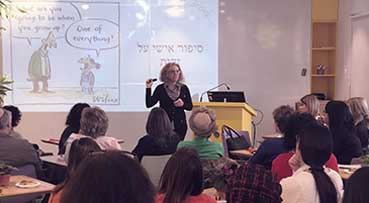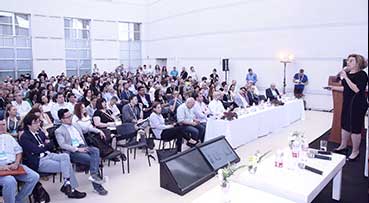Don’t confuse flexibility with hybrid work. They are not the same. You can adopt a hybrid work policy which won’t prevent dissatisfaction and turnover. And vice versa – you can employ people in shifts in a factory or store and still provide a flexible work environment.
Workplace flexibility doesn’t necessarily translate into work-from-home, hybrid or remote policies. Some people don’t even want to work from remotely. The pandemic unveiled the toxic aspects of flexibility, demanding constant responsiveness to clients, managers and peers, regardless of time or place. Or in other words, flexibility that makes us work even when we don’t want to work…
This sentiment can be identified on social media through hashtags like #ActYourWage, #BareMinimumMondays, #RageApplying, and #lazy-girl jobs, all painting a vivid picture of the evolving role of work in our lives. The video titled “Why I quit my job as an investment banker” by a 27-year-old garnered 280,000 views in a short time. It’s a great example of a generation rejecting toxic flexibility – that which demands responsiveness any time, anywhere, even when we don’t want to work, only because that’s how it was always done. This sentiment manifests in the decreasing numbers of top-tier program graduates pursuing the once-coveted career as Wall Street investment bankers.
Economic indicators reflect this shift, too. Their erratic behavior suggests they’re gauging an unfamiliar terrain — a new and uncompromising demand to combine life in work and work in life and readjust it every time something changes. Here are a few examples:
The data reveals that people haven’t reverted to previous employment levels. That is why, despite economic conditions, many nations are experiencing full employment, with labor markets hungry for workers across diverse sectors and roles.
The data suggests that people prioritize flexibility over monetary compensation. Thus, despite the labor market’s demand for workers, we don’t see any real wage increases.
The data indicates that companies recognize the value employees place on flexibility over salary. Hence, while many firms express a desire for staff to return to the office, there’s been a marked surge in job listings offering hybrid work options across various sectors and roles. An analysis of job advertisements in English-speaking countries from 2019 to 2023 reveals a sharp uptick in roles specifically mentioning hybrid or remote work conditions. This trend towards remote work isn’t limited to knowledge-based industries but extends to all sectors, including food, agriculture, and manufacturing. As per LinkedIn, one in six job listings now offer remote work, attracting half of all job applications (!)
And the data also reveals employees have never been happier. The Conference Board, a global think tank, notes that U.S. worker satisfaction is at its peak since their initial measurements in 1987. This uptick isn’t attributed to heightened job interest but rather to work consuming a smaller fraction of their lives. Of the 18 satisfaction components, job interest had the least impact on satisfaction this year, whereas work-life balance held the most significance. Salary, incidentally, ranked somewhere in the middle.
For a generation of leaders who climbed the ladder through relentless work hours, sacrificing family and leisure, and deeply intertwining personal identity with job titles, this perspective is foreign. These leaders now face a generational clash against those who equate intense work with improper living. Yet, the younger generation has a point; they’re gearing up for double the career span — not just 30, but 60 years. And no, they’re not prepared to work at the same intense pace, but rather over a more extended period. They’re strategizing for a marathon, allowing for varied intensities, shifts in volume, diverse roles, pauses, and restarts.
Consequently, they’re redefining flexibility, anticipating workplaces to mold around their needs rather than conforming to traditional work environments.
At times, flexibility means integrating personal tasks into the workday. This allure of blending home chores or family moments during work hours was a silver lining for many during the pandemic-induced remote work. Such adaptability isn’t exclusive to remote roles; even positions like cashiers or store clerks can experience it, provided there’s a reimagining of shift structures and work arrangements.
Occasionally, flexibility means allocating time and energy to address pressing personal matters, be they challenges like illnesses or celebratory events necessitating planning, assistance, and empathy. Such adaptability can manifest as time accommodations, remote work options, adjusted workloads or hours, and even benefits designed to ease these personal situations, such as assistance in coordinating events or managing occurrences.
At times, flexibility is merely the freedom to select work hours. It’s the distinction between an employee with a set schedule and one who can slot into shifts based on life’s demands. A Wolt courier, for example, is not a hybrid worker, but his job offers significant flexibility due to the autonomy in deciding when to work and when to refrain.
Flexibility can occasionally be a transient requirement, like taking time off for education, recreation, or other endeavors, with the assurance of a return. Sometimes, it’s about opting for a less demanding role, working part-time, or merely decelerating, giving oneself the freedom to prioritize pursuits outside of the professional realm without justification.
Authentic workplace flexibility transcends the mere dimensions of “when” and “where”. It encompasses the “how”, “with whom”, and “under what conditions”. Moreover, it’s accessible to all. Even if remote work isn’t feasible, by embracing a broader definition of flexibility, it becomes available to those bound by location. Shift work gains flexibility when individuals can tailor shifts to fit their lives rather than fit into a rigid schedule. This enables students to work on non-academic days, allows parents to be home midday, and simultaneously enhances client services. During the pandemic, many organizations adjusted shift lengths and structures to meet flexibility demands. Service centers now retain an element of remote work, offering the capability to bolster staff during peak hours, thereby enhancing client service and creating opportunities for part-time employment.
The challenge with flexibility lies in its diverse interpretations across individuals. Consequently, its execution varies among managers, teams, departments, and entire organizations. It’s no surprise that managers often struggle to decipher the precise needs of their employees while balancing top-down directives. Much like the ongoing evolution of workplace norms, flexibility demands a multidirectional dialogue: between the organization and its leaders, within teams, and between managers and staff, as well as among peers. Genuine flexibility affords the discretion to tailor its application to the unique needs of the individual, team, and the broader job function. This isn’t about boundless flexibility but rather flexibility within defined boundaries. It’s about setting clear objectives while simultaneously eliminating obstacles to enable adaptive solutions for all stakeholders.
Ultimately, when weighing work against life, life prevails. Especially now, when the possibilities are ever-expanding. With an increasing number of roles and organizations embracing adaptive work structures, employees recognize their need to take responsibility for their own work-life needs, with or without organizational backing. Over a six-decade career, they must master their occupational relevance, self-management, task delegation, and workload, ensuring it benefits not only themselves but also their work, clients, and peers. As we steadily transition to a predominantly digital workspace, traditional notions of attendance, work hours, and other age-old paradigms will fade. Hence, adaptability and flexibility should be our guiding principles.

![large-AX1A2125-2[1]](https://niritcohen.com/wp-content/uploads/elementor/thumbs/large-AX1A2125-21-pnzedcs72atx5aeurqytqdiihxixlq02re9mlz805s.jpg)






